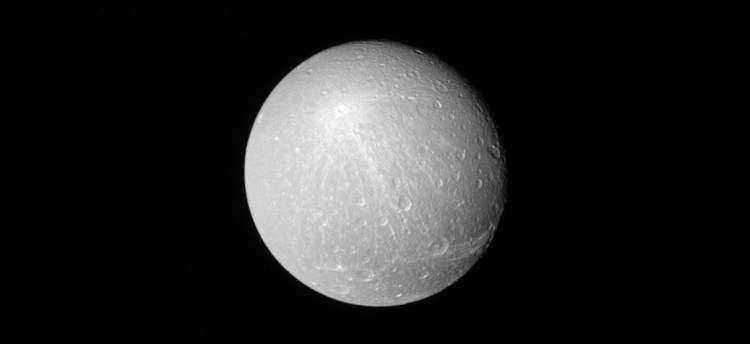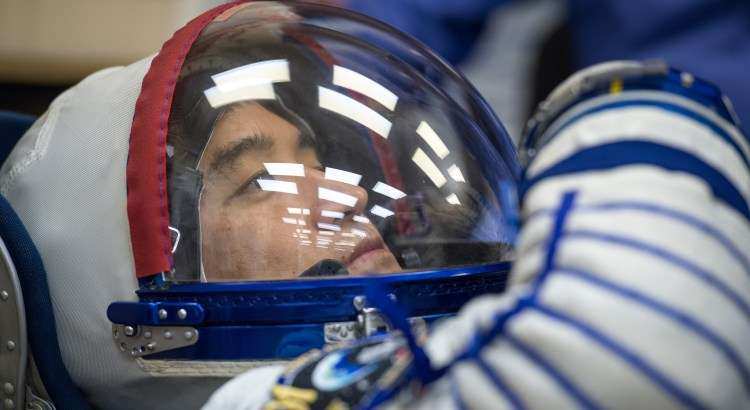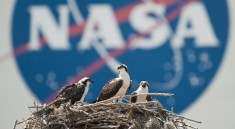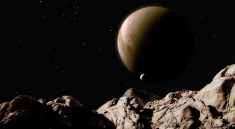
When viewed from a distance with the sun directly behind Cassini, the larger, brighter craters really stand out on moons like Dione.
Credit: NASA/JPL-Caltech/Space Science Institute
Last Updated: Feb. 21, 2017
 Cassini is the name of a crater on Dione, one of Saturn’s moons. When viewed from a distance with the sun directly behind Cassini, the larger, brighter craters really stand out on moons like Dione.
Cassini is the name of a crater on Dione, one of Saturn’s moons. When viewed from a distance with the sun directly behind Cassini, the larger, brighter craters really stand out on moons like Dione.
Among these larger craters, some leave bright ray patterns across the moon, calling attention to their existence and to the violence of their creation.
The rayed crater seen here on Dione (698 miles, or 1,123 kilometers across) is named Creusa. The rays are brighter material blasted out by the impact that formed the crater. Scientists can use the patterns of ejecta (like these rays), to help determine the order of geological events on a moon’s surface by examining which features lie on top of other features.
This view looks toward the Saturn-facing side of Dione. North on Dione is up and rotated 31 degrees to the right. The image was taken with the Cassini spacecraft narrow-angle camera on Nov. 26, 2016 using a spectral filter which preferentially admits wavelengths of near-infrared light centered at 727 nanometers.
The view was obtained at a distance of approximately 350,000 miles (560,000 kilometers) from Dione. Image scale is 1.8 miles (3 kilometers) per pixel.
The Cassini mission is a cooperative project of NASA, ESA (the European Space Agency) and the Italian Space Agency. The Jet Propulsion Laboratory, a division of the California Institute of Technology in Pasadena, manages the mission for NASA’s Science Mission Directorate, Washington. The Cassini orbiter and its two onboard cameras were designed, developed and assembled at JPL. The imaging operations center is based at the Space Science Institute in Boulder, Colorado.
For more information about the Cassini-Huygens mission visit http://saturn.jpl.nasa.gov and http://www.nasa.gov/cassini. The Cassini imaging team homepage is at http://ciclops.org.





